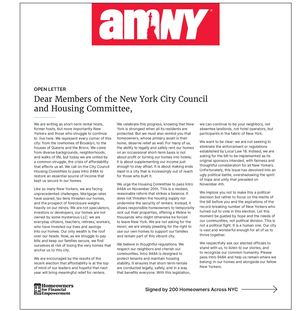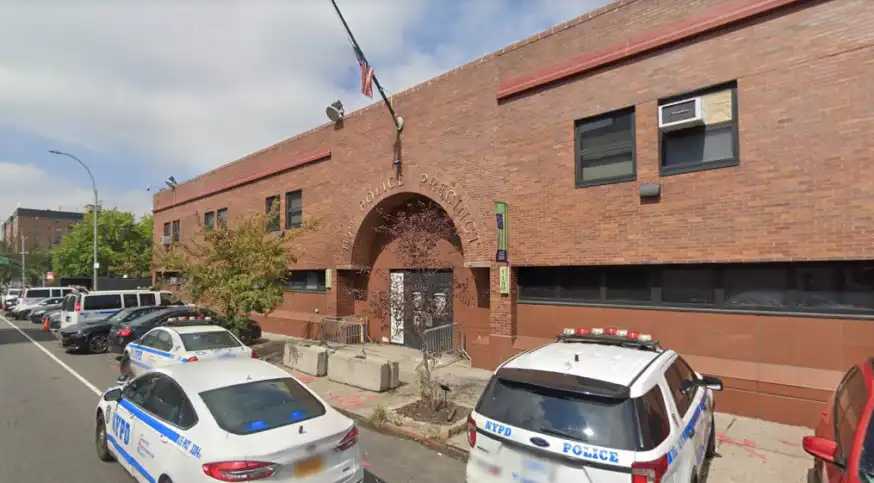By Brian Steinwurtzel
The residents and business owners who serve on the BID Steering Committee (www.sohobid.org) and the other supporters of a business improvement district for Soho’s Broadway are very disturbed and disappointed with The Villager’s editorial “Soho BID needs work” in your last week’s issue.
The editorial calls on BID supporters to gather more support. In the specific BID service area — Broadway between Canal and Houston Sts. — the majority of property owners (residential and commercial) support the BID. Under New York’s BID Law, created by our elected representatives, that’s what it takes to form a BID. Denying the people who live and work on Broadway the BID they want because of opposition outside the BID area flies in the face of the law and democratic principles. It cannot simply be a case where those who yell the loudest are right.
If BID advocates must win support of their neighbors outside the BID area, where do you draw the line?
The editorial recognizes the urgent need to implement solutions along Broadway, solutions that seek to manage the “success” of this major retailing destination; mitigate its negative impacts and bring to the forefront what makes historic Soho special. The editorial acknowledges that a BID is the workable alternative that provides the democratic decision-making structure and the necessary funding to bring focused, persistent attention to the challenges faced by Soho’s Broadway.
The BID Steering Committee has appreciated the reporting by The Villager and its sister paper Downtown Express on this important neighborhood planning issue since its public presentation in April 2010.
The initiative taken by Mr. Henry Buhl, resident of Soho and founder of ACE, was the start of the formation process of the proposed BID and it is still underway as the legislation awaits approval by the City Council. The BID Steering Committee, Community Board 2, the Department of City Planning and the City Council all have followed the BID Law, and we look forward to the completion of this democratic, legislative process.
Yes, the clumsy, outdated legal name “business improvement district” is misleading and does not define the intentions of this specific BID for Soho’s Broadway. This may be why so many wrongly assume that the BID plan intends to “promote only business, attracting more crowds, tourism, etc.”
The BID Steering Committee, in its role as an initial planning group, has succeeded in crafting a BID plan with services and improvements that reflect the areas of concern expressed by the many constituent groups served by the BID. The BID plan speaks of the same issues that: 1) the “Broadway Residents Coalition” has brought to the attention of city officials; 2) the BID area’s 800 businesses and 12,000 employees talk about; and 3) are experienced by residents and commercial property owners each and every day. The BID plan does not “need work.” It is at the best it can be, and will be better if given a chance to prove itself.
At every turn, the BID Steering Committee has made a genuine effort to address community concerns, and to reconcile Community Board 2’s resolution with the merits of the BID district plan. As demonstrated by our mission statement and by the commitment of BID area residents participating in BID committee meetings and by the encouragement of Councilmember Margaret Chin, it is clear that working together to improve the quality of life of a neighborhood “under siege,” while seeking to strike a balance between resident and commercial interests, is indeed possible. The BID Steering Committee remains committed to working with everyone, supporters and opponents alike.
You cite the case of 40 Mercer St. where five members of the condo board voted unanimously to commit all 40 condo units in support of the BID. That board vote is accepted common practice of condo boards everywhere and of the BID formation process. That vote happened more than a year ago and so far no condo owner in 40 Mercer St. has objected; and, in fact, the board will reaffirm its support along with other property owners who voted for the BID. Moreover, the total number of residential condo units at 40 Mercer St. is not significant enough to change results, since there remains an overwhelming majority of respondents in support of the BID. That being said, even if you removed 40 Mercer St. from the tally, 72 percent of property-owner respondents support the BID (versus 80 percent with 40 Mercer St.).
We regret that this doesn’t pass The Villager’s “smell test,” but those are the rules. We respectfully suggest you check the facts and take another sniff.
The BID structure provides certainty of annual funding, flexibility to respond to neighborhood issues, and a private-public partnership that succeeds because it reflects active, informed participants. The response of “just say no” is not a workable alternative to the special needs of Soho’s Broadway.
Steinwurtzel is chairperson, Broadway Soho Business Improvement District Steering Committee




































